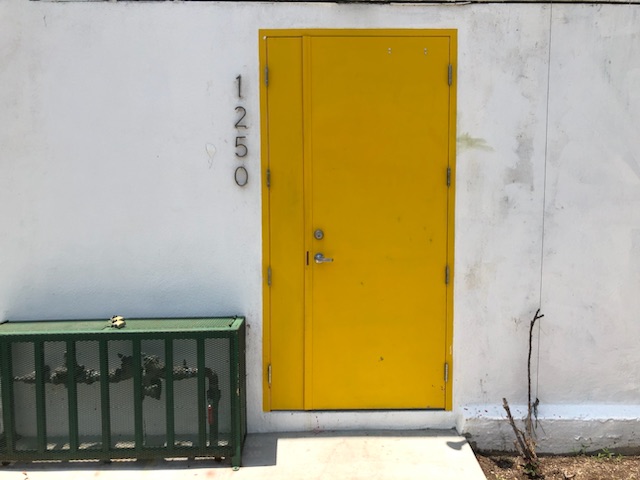UNITED STATES—Someone managed to sing without a guitar. They sang to deafen their ears to the approaching whirlwind. The access streets to the plaza were blocked. There were warning shots fired though the heads of the leaders.
In the cavernous middle of the Great Depression, over 100,000 workers from 30 separate unions declared the Great Banana Strike. Involved were seven countries of Bananaland, many of whose borders were in flux. It began on August 2 with one man, Cahuma, representing the Atlantic Workers Congress. The workers were fed up with years of empty promises that company had been making to improve conditions.
Cahuma presented a list of requests to Allied Fruit Company’s management, which they denied, and a strike followed. A strike spanning the largest area ever recorded, from Turrialba to the Panamanian border.
Earlier in that decade, the exporters had taken a big hit during the depression. At that point, the company left banana production to local plantations. This resulted in poorer working conditions and fewer jobs.
By 1934, workers were demanding an eight-hour workday, overtime pay, and cash payment instead of the coupons they were using that could be used at designated police stations and health services.
The strike lasted through August when the government and local businesses accepted the requests. This gesture temporarily stopped the strike.
Despite placating the problem, Allied Fruit Company did not agree to the requests, resulting in the local farmers withdrawing from the agreement. This resulted in violent retaliation incited by the company. Several workers, including Cahuma, sought refuge in the jungle.
Workers did what they could to fight back. They burned and destroyed company’s shipments and products. César Chávez in California land was an apostle of Gandhi and non-violence, and it took years. The burning and destruction of the company’s shipments led to a sudden agreement to minimum wage, adequate housing to be paid for by Allied Fruit, and first aid kits.
“Both sides had to compromise,” one of the student leaders said.
“We wanted hospitals they gave us first-aid kits.”
“You take what you can get.”
The strike before the labor movement had been like a centipede that wanted to go in a hundred directions. Many later became leaders in social reform processes in the 1940s, leading to Social Guarantees.
As expansion grew across Costa Norte and other provinces, the company brought its American cultural understanding of what they saw as a frontier environment. They still considered the landscapes as ‘uncivilized’ and in need of improvement, using descriptions of “unimproved, threatening, and resistant” to Company designs. The Company came in and improved Nature, much like what was done during the western expansion of the United States. Phone lines crossed the sky.
Allied Fruit drew on these fanciful historical interpretations of the environment and approached the task of plantation construction, or environmental transformation, by utilizing this historically-informed – and fundamentally American – cultural lens. Characterized by dense jungles, high humidity, heavy rainfall, and extreme temperatures, tropical environments posed a series of threats to the imposition of Company designs.
As the company made way for the railroad and more plantations, they removed dense underbrush, cut down trees, and excavated to create intricate drainage systems to build plantations and the thousands of dwellings that go with them. Workers suffered from malaria and yellow fever as they plowed their way to the coast. The company did provide clean water, screened living quarters, and health care because a number of deaths, without these amenities, threatened production.
The Allied Fruit Company was given land concession, equivalent to almost 10 percent of the nation. It was a good Christian gesture on the part of this “uncivilized land” to its only employer from 1899 until it left the country in 1984 due to anti-trust laws from the American government, labor conflicts, soil exhaustion, and higher production costs. But the vestiges of these environmental enhancements are still there.
Once farmland is cleared for a banana plantation, the fertility of the land diminishes greatly. This results in a vicious cycle of banana producers needing to continually expand their fields due to the declining fertility of the soil. Monocultures also keep plants from developing immunity to disease, which then results in the application of chemicals. Fungicides and insecticides are applied as many as 40 times per year. These cancer-causing chemicals threaten plantation workers as well as surrounding areas.
When a single crop was cultivated in a single crop, as in the case of the banana plantations, it produced a lot of sediment and the runoff from herbicides and pesticides over time reached sensitive coral reefs off the Costa Norte. Extinction threatens tortoises and manatees as this runoff kills the algae they rely on for survival. The last country where the coral reefs were intact was the island of Cuba, a fluke of an island that starved out the beast of moneyism, starved its people and by default saved the corals. It is where the author Graydon Miller chose to live out his last days, once the island nation reappeared on the map of the United State instead of this strange pariah and yet linked inextricable to the Heart, was indeed the very belly button of all the Americas.
“Is a coral reef as beautiful as a man or woman, this paragon of devised by a demented God. Deforestation, mono-crop plantations, and chemical use so fatigue soil so devoid of nutrients that it is impossible to grow anything on it, they are even weeds.
“History repeated itself.”
“It is becoming senile.”
“It is eating its own tail.”
To be continued…
Graydon Miller is the Wizard of Fiction.






